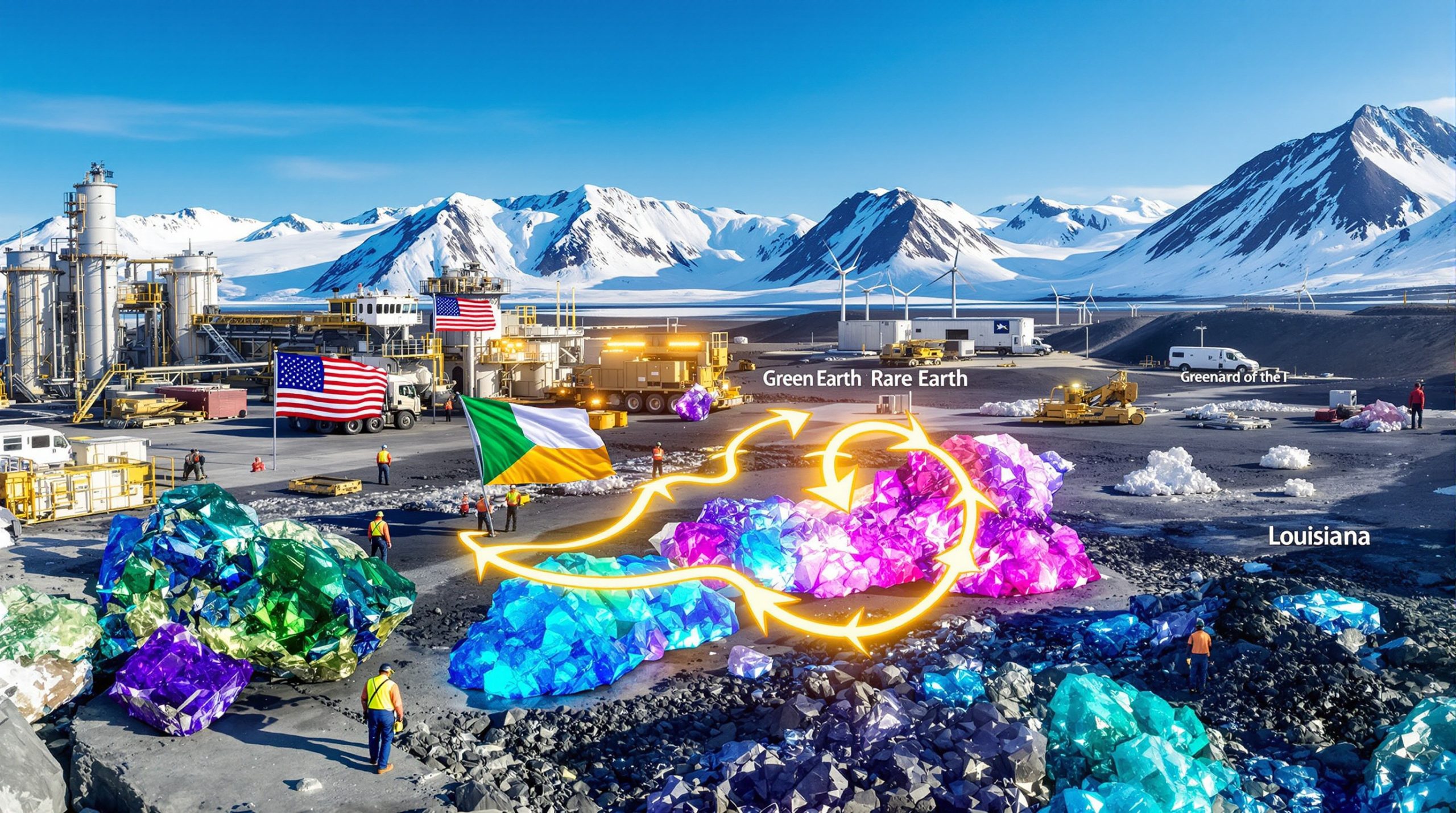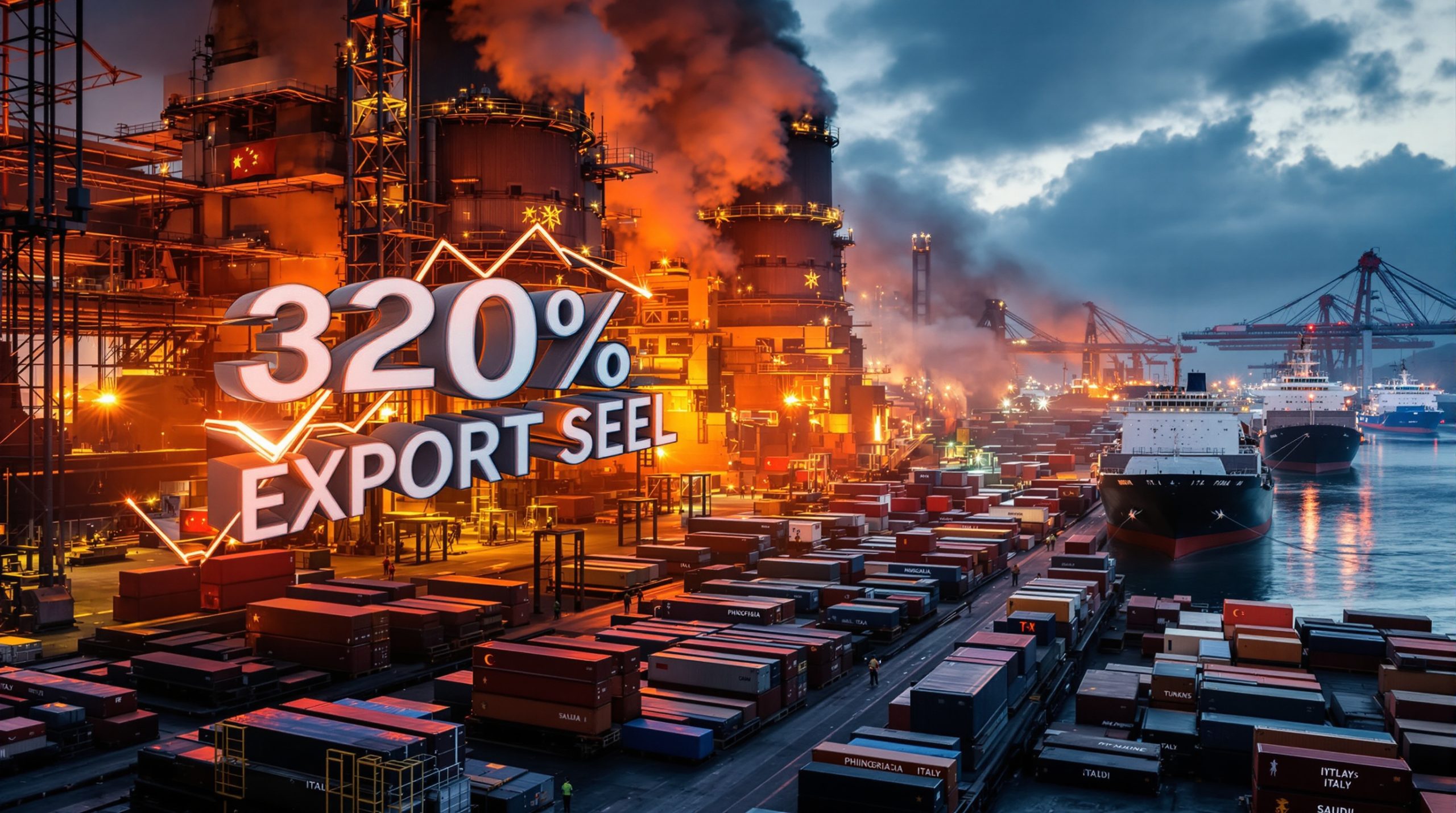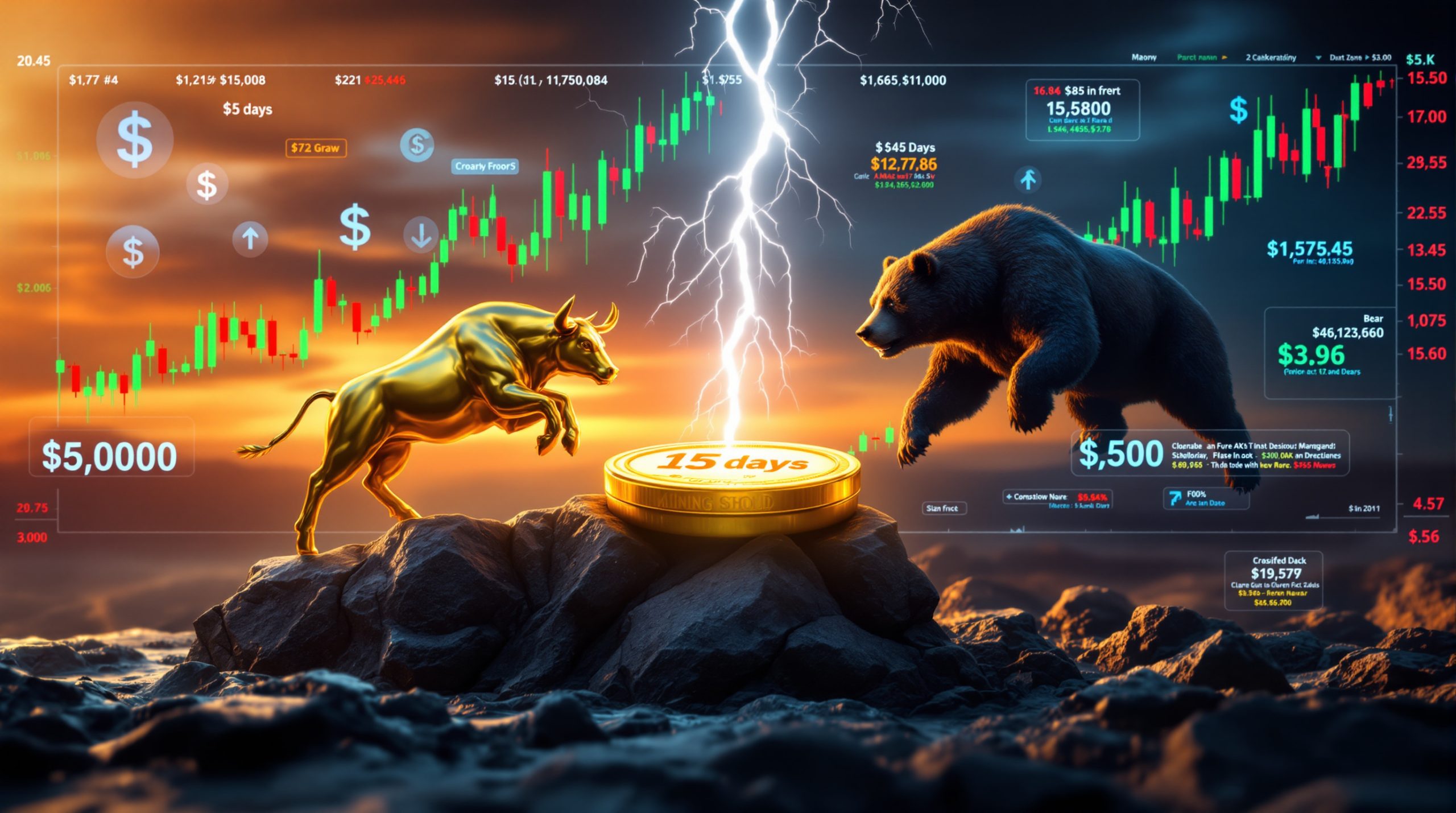Why Is China Accelerating Its Foreign Mining Acquisitions?
China's overseas mining investments have reached unprecedented levels, with ten deals exceeding $100 million USD in 2023 alone—marking the highest investment surge since 2013. This strategic push reflects Beijing's growing urgency to secure critical raw materials amid increasing Western restrictions and intensifying global competition for finite resources.
According to Financial Times data, the dramatic increase in both deal volume and value signals China's determination to establish supply chain resilience in an increasingly fractured geopolitical landscape. Mining industry analysts note that this acceleration represents "a race against time as the West rebuilds its own supply chains," highlighting the strategic importance China places on mineral security.
Record-Breaking Investment Figures
The scale of China's overseas mining expansion in 2023 demonstrates a clear shift in strategy:
- Ten major mining acquisitions each exceeding $100 million—the highest number in a decade
- Significant year-over-year increase in total capital deployed compared to 2020-2022
- Concentrated focus on resource-rich regions spanning Africa, South America, and Central Asia
- Strategic targeting of both producing assets and development-stage projects
Key Strategic Drivers
Multiple factors are driving China's accelerated acquisition strategy:
- Preemptive positioning: Securing access to critical minerals before Western restrictions further tighten
- Supply chain independence: Building resilient material supply networks insulated from geopolitical disruptions
- Geographical diversification: Spreading investment across multiple continents to minimize country-specific risks
- Strategic competition: Acquiring key assets before Western nations can rebuild their own supply chains
- Technological dominance: Ensuring steady material flows for clean energy manufacturing and advanced technologies
"Beijing's aggressive overseas mining strategy reflects a fundamental recognition that whoever controls critical mineral supply chains will dominate the industries of tomorrow," notes the Mining.com analysis.
Which Chinese Mining Companies Are Leading Global Acquisitions?
Several prominent Chinese mining corporations have spearheaded major international acquisitions, focusing on resource-rich regions across multiple continents. These state-backed entities benefit from substantial financial resources, strategic government support, and long-term investment horizons that enable bold acquisition strategies.
Major Players and Their Recent Deals
-
Zijin Mining: One of China's largest gold producers has made significant investments in Kazakhstan's mineral resources, expanding its Central Asian footprint while diversifying beyond its historical gold focus. The company's Zijin mining expansion strategy has positioned it as a leader in global resource acquisition.
-
Baowu: China's state-owned steel giant has executed strategic acquisitions in Brazil's mining sector, securing vital iron ore and other mineral assets to support domestic steel production.
-
Chifeng Gold: Amid record high gold prices, this rapidly expanding Chinese mining company has pursued an aggressive international growth strategy, targeting gold-producing assets across multiple jurisdictions.
-
Strategic focus materials: Chinese miners are particularly targeting lithium, copper, cobalt, and rare earth elements—critical components for renewable energy technologies, electric vehicles, and advanced electronics.
Regional Focus of Chinese Mining Investments
Chinese mining investments show clear geographical priorities:
-
Central Asia: Kazakhstan has emerged as a key investment destination, offering significant mineral wealth combined with geographic proximity and favorable political relations with China.
-
South America: Brazil continues attracting substantial Chinese capital, particularly in iron ore, copper, and lithium assets, leveraging existing trade relationships and infrastructure.
-
Africa: The continent maintains strategic importance for Chinese mining companies seeking cobalt, copper, and other critical minerals, with decades of established investment presence.
-
Southeast Asia: Growing focus on nickel and copper resources, particularly in Indonesia and the Philippines, to support China's stainless steel and electronics manufacturing sectors.
How Are Soaring Gold Prices Influencing China's Acquisition Strategy?
The global surge in gold prices has become a significant catalyst for Chinese mining companies to expand their international footprint. With gold maintaining strong performance amid economic uncertainty, Chinese firms are leveraging this market strength to fuel ambitious acquisition programs.
Gold-Focused Acquisition Trends
Chinese gold miners are pursuing a multi-faceted strategy in international markets:
- Financial leverage: Capitalizing on strong domestic backing and favorable financing to fund overseas gold acquisitions
- Asset diversification: Strategic targeting of both producing mines and development-stage projects to balance immediate returns with long-term growth
- Jurisdictional spread: Diversifying across multiple countries to minimize political and regulatory risks
- Operational synergies: Focusing on operations with expansion potential and extended mine life that can benefit from Chinese technical expertise
As one mining analyst observed, "Chinese gold miners benefit from a domestic market that places high cultural value on gold, providing them with capital advantages when pursuing international acquisitions."
Case Study: Chifeng Gold's International Expansion
Chifeng Gold exemplifies China's gold sector internationalization:
- Rapid portfolio growth through strategic acquisitions across multiple continents
- Integration of acquired assets into a broader corporate structure with centralized technical support
- Implementation of Chinese mining expertise and capital to optimize operations and expand resources
- Long-term strategy focusing on building a global gold production portfolio with complementary assets
The company's expansion demonstrates how rising gold prices create opportunities for well-capitalized Chinese firms to establish international presence, particularly when acquiring assets from Western companies repositioning their portfolios.
What Challenges Does China Face in Its Mining Expansion?
Despite the aggressive investment strategy, Chinese mining companies face mounting obstacles as Western nations implement new restrictions and compete for the same resources. These challenges create a complex operating environment that requires increasingly sophisticated approaches to international acquisitions.
Geopolitical Headwinds
Chinese mining companies encounter growing resistance in many jurisdictions:
- Increased scrutiny: Foreign investment review boards in Western nations now apply heightened examination to Chinese mining investments
- Regulatory barriers: New policies in North American trends, Europe, and Australia specifically designed to limit Chinese access to strategic mineral assets
- National security reviews: Delays and outright blocks of potential acquisitions based on critical mineral supply chain concerns
- Western competition: Growing competition from Western mining companies backed by new government support programs and financing
These obstacles have forced Chinese companies to adapt their acquisition strategies, often focusing on jurisdictions with fewer restrictions or partnering with local entities to navigate regulatory hurdles.
The Race Against Western Supply Chain Rebuilding
China faces an accelerating challenge as Western nations actively develop alternative supply chains:
- Policy initiatives: The US, EU, and allies implementing comprehensive policies to reduce dependence on Chinese processing and refining
- Strategic partnerships: Western nations forming resource security alliances with mineral-rich countries previously dominated by Chinese investment
- Domestic production incentives: Substantial government subsidies and tax benefits encouraging Western mining development
- Compressed timeline: Narrowing window for unrestricted acquisitions as Western supply chain strategies advance
This time pressure explains the current surge in Chinese overseas mining investments, as companies race to secure positions before Western alternatives mature.
How Does Royal Gold's Acquisition Compare to Chinese Investment Strategies?
While Chinese companies expand globally, Western mining entities are also consolidating, as evidenced by Royal Gold's recent $3.7 billion acquisition of Sandstorm Gold and Horizon Copper. This landmark transaction demonstrates how Western companies are responding to Chinese expansion with their own strategic consolidations.
Analyzing the Royal Gold Mega-Deal
The Royal Gold transaction represents a significant reshaping of the Western mining royalty sector:
- Combined transaction value: $3.7 billion
- Portfolio expansion: Addition of 40 producing assets to Royal Gold's existing operations
- Production growth: Expected 26% increase in 2025 production
- Shareholder premiums: 21% premium offered for Sandstorm shareholders, 85% premium for Horizon investors
- Diversified revenue: Resulting portfolio of 80 revenue-generating assets with 75% of revenue derived from gold
According to Royal Gold's statements, "the deal cements its position as a top North American streaming and royalty player," highlighting the strategic importance of scale in competing globally.
Strategic Implications for Global Mining Competition
This consolidation carries significant implications for the competitive landscape:
- Financial scale: Creation of larger Western companies with the financial capacity to compete with Chinese state-backed entities
- Portfolio diversification: Enhanced geographic and commodity exposure reducing operational and political risks
- Operational efficiency: Consolidated corporate structures allowing for optimized capital allocation and reduced overhead costs
- Competitive positioning: Emergence of stronger Western alternatives for mining companies seeking financing partners
The Royal Gold transaction illustrates how Western mining firms are adapting to a changing global landscape where Chinese companies have historically enjoyed significant advantages in capital access and government support.
What Is Europe's Response to Critical Mineral Supply Concerns?
The European Union is taking urgent steps to secure its critical mineral supply chains, reflecting similar concerns to those driving China's overseas mining investments. As China's global mining expansion accelerates, Europe's vulnerability in mineral supply has prompted unprecedented policy responses.
EU's Emergency Minerals Strategy
According to Financial Times reporting, Europe's approach includes:
- Fast-tracked reserves: European Commission urging expedited establishment of emergency reserves for critical minerals
- Comprehensive risk assessment: Draft EU document warning of converging threats including geopolitical tensions, cyber attacks, and infrastructure vulnerabilities
- Strategic materials: Target minerals including rare earths, permanent magnets, cable repair kits, and nuclear fuel
- Implementation mechanism: Deployment through the EU's broader "preparedness union strategy"
This approach represents a significant shift in European thinking about mineral security, historically reliant on global markets and trade relationships rather than strategic reserves.
Geopolitical Context Driving EU Action
Europe's mineral security concerns exist within a complex geopolitical context:
- Security warnings: Defense officials raising alarms about potential conflict with Russia and other threats
- Critical assessment: Recognition that current crisis readiness falls short in today's high-risk environment
- Parallel strategies: Alignment with similar initiatives like the US Critical Minerals Strategy
- Supply chain vulnerabilities: Acknowledgment of dangerous dependence on potentially hostile or unstable suppliers
The EU critical mineral strategy demonstrates how concerns once limited to China and the United States have now become global, creating a competitive dynamic for access to finite mineral resources.
How Are Major Mining Companies Restructuring Their Global Assets?
Global mining giants like Glencore are restructuring their operations worldwide, creating opportunities for regional players to acquire strategic assets. These portfolio optimizations reflect changing market conditions and corporate priorities.
Glencore's Strategic Divestments
Glencore's recent activities highlight this trend:
- Philippine copper smelter: Sale to billionaire Manny Villar after the facility was idled earlier in 2023
- Operational challenges: Facility closure stemmed from falling treatment charges and tight ore supply
- Previous importance: Facility served as a key component of Glencore's Asian copper logistics network
- Broader pattern: Part of larger restructuring of assets in Canada and the United States aimed at reducing costs
This divestment demonstrates how major mining companies continuously evaluate their global footprints, creating acquisition opportunities for emerging players with different cost structures or strategic priorities.
Implications for Regional Mining Landscapes
These restructurings reshape regional mining dynamics:
- Local ownership expansion: Regional business leaders like Villar adding strategic mining assets to diversified business portfolios
- Operational revival: Potential for previously struggling assets to find new life under different ownership structures
- Competitive landscape shifts: Regional players gaining access to processing infrastructure previously controlled by multinational corporations
- Supply chain reconfiguration: New ownership potentially redirecting mineral flows to different end markets
As Villar adds the smelter to his business empire spanning real estate, retail, and media, it exemplifies how mining assets increasingly integrate into broader business ecosystems rather than remaining in traditional mining companies. The Glencore restructuring impact continues to reverberate through global supply chains.
What Developments Are Occurring in North American Mining Projects?
Significant developments are unfolding in North America, with controversial projects like Northern Dynasty's Pebble Mine seeking regulatory reconsideration. These developments highlight the tension between critical mineral needs and environmental protection.
Pebble Mine's Regulatory Journey
The Pebble Mine project in Alaska illustrates North America's complex mining regulatory landscape:
- Potential significance: Project could become North America's largest copper and gold mine
- Regulatory history: Previously blocked by the Environmental Protection Agency due to concerns about impacts on the Bristol Bay watershed
- Current developments: Northern Dynasty reports EPA reconsidering its veto
- Company position: Northern Dynasty argues the decision conflicts with US Army Corps of Engineers findings
- Market impact: 25% share price increase following the news, pushing market cap to CA$1.25 billion
According to Northern Dynasty CEO Ron Fa, "talks with the EPA offer the fastest path to reverse the ban," highlighting the company's strategic focus on regulatory engagement.
Environmental and Economic Considerations
The Pebble Mine situation exemplifies broader tensions in North American mining:
- Resource significance: The project represents a major potential source of copper and gold at a time of increasing demand
- Environmental concerns: Location in sensitive Bristol Bay watershed raises significant ecosystem protection questions
- Regulatory precedent: Decision could influence how other controversial mining projects are evaluated
- Economic impact: Potential to create substantial employment and tax revenue while supporting domestic mineral supply chains
These competing considerations reflect the complex calculus facing North American policymakers as they balance resource security with environmental protection—a dynamic that contrasts with China's mining giants' acquisition spree and more development-focused approach to mining policy.
FAQs About China's Global Mining Strategy
Why is China investing so heavily in overseas mining operations?
China is pursuing aggressive overseas mining investments to secure critical raw materials for its manufacturing sector, particularly as Western countries implement restrictions on Chinese access to minerals. The strategy aims to establish resilient supply chains independent of geopolitical pressures and position China advantageously before Western nations can rebuild their own mineral supply networks.
Which minerals are Chinese companies primarily targeting?
Chinese mining companies are primarily targeting copper, gold, lithium, cobalt, nickel, and rare earth elements. These minerals are essential for renewable energy technologies, electronics manufacturing, and other strategic industries central to China's economic development plans.
How are Western countries responding to China's mining expansion?
Western nations are responding by implementing their own critical minerals strategies, including the establishment of emergency reserves (EU), forming strategic partnerships with resource-rich countries, investing in domestic production, and in some cases, implementing regulatory barriers to Chinese acquisitions of mining assets deemed strategically important.
Key Takeaways on Global Mining Investment Trends
-
China's overseas mining investments have reached their highest level in a decade, with ten deals exceeding $100 million in 2023
-
Chinese miners like Zijin and Baowu are leading major acquisitions in Kazakhstan and Brazil
-
Rising gold prices are fueling international expansion by Chinese gold mining companies
-
Western companies are consolidating, as seen in Royal Gold's $3.7 billion acquisition of Sandstorm Gold and Horizon Copper
-
The European Union is fast-tracking emergency reserves of critical minerals amid rising geopolitical tensions
-
Global mining giants like Glencore are restructuring their operations, creating opportunities for regional players
-
Regulatory reconsideration of previously blocked projects like Alaska's Pebble Mine could significantly impact North American mineral supply
Industry Outlook: As competition intensifies for finite mineral resources, expect accelerated dealmaking across the mining sector with premium valuations for producing assets in stable jurisdictions.
Ready to Gain an Edge in ASX Mining Investments?
Discover the next major ASX mineral discoveries before the market with real-time alerts powered by Discovery Alert's proprietary Discovery IQ model, turning complex data into actionable investment insights. Explore why significant mineral discoveries can lead to substantial returns by visiting our dedicated discoveries page and begin your 30-day free trial today.




